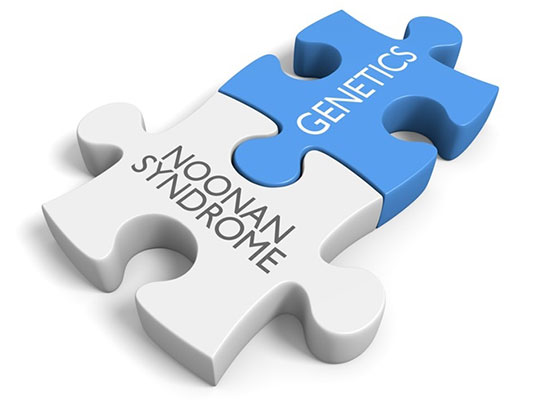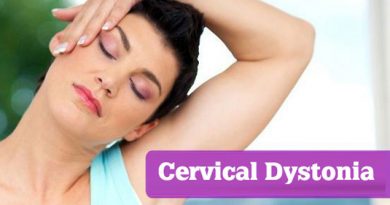Ayurvedic Treatment for Noonan Syndrome
Noonan syndrome is a genetic disorder that usually includes heart abnormalities and characteristic facial features. Genetic mutations on several genes are known to cause Noonan syndrome, but the diagnosis is usually Noonan syndrome is a genetic disorder that usually includes heart abnormalities and characteristic facial features. Genetic mutations on several genes are known to cause Noonan syndrome, but the diagnosis is usually established on the basis of clinical features.
According to the National Organization for rare disorders, Noonan syndrome is thought to affect approximately 1 in 1000 to 1 in 2500 people.
Effects of Noonan Syndrome
The body parts typically affected by Noonan syndrome are:
- Heart
- Facial feature
- Musculoskeletal system
- Kidneys – Rarely and mild
Heart Abnormalities
Around 65% of children with Noonan syndrome have heart abnormalities. The most common abnormalities are:
- Pulmonary Valve Stenosis- A narrowing of the pulmonary valves which helps in controlling blood flow from the heart to lungs.
- Hypertrophic Cardiomyopathy-Thickening of the heart muscles.
- Ventricular Septal Defect- Abnormal hole between the two lower chambers of the heart.
- Atrial Septal Defect- Abnormal hole between the two upper chambers of the heart.
Facial Characteristic Features
Noonan syndrome looks varies from one child to the other and can change with age. Characteristic are:
- Ptosis – heavy eyelids that may interfere with vision.
- Diamond shaped eyebrow.
- Coarse and curly hair.
- Short neck with extra skin folds.

Musculoskeletal System Abnormalities
Musculoskeletal system abnormalities are included:
- Short stature – Children with Noonan syndrome are frequently shorter than expected for their age.
- Impaired coordination and low muscle tone.
- Sternum- Deformity of the breastbone.
Causes
Noonan syndrome is caused by a mutation or abnormality in one of several genes. The genes associated with Noonan Syndrome can be:
- Inherited from a parent- A 50% of people with the condition have an affected parent.
- A new mutation that occurs in children without any genetic predilection.
Signs and Symptoms
A variety of other issues can arise in Noonan syndrome:
- Eye problems-crossed eyes, lazy eyes, and slightly blurred vision.
- Hearing problems- It may be due to nerves issues.
- Learning difficulties- Issues with hearing and eyesight may contribute to learning difficulties
- Feeding issues- It can affect infants.
- Bleeding and Bruising – It can result from blood clotting or platelet issues.
- Male infertility- It occurs particularly if one or both testicles fail to drop into the scrotum and if this is not corrected at an early age. Female fertility is usually unaffected.
- Lymphatic condition- It can occur if excess fluid builds up in the lymphatic system. This may be noticeable on the top of the feet and back of the hands.
- Bone marrow problems- Abnormal white blood cell count, may develop.
- Late puberty.
Diagnosis
- Noonan syndrome can be diagnosed on the basis of signs and symptoms.
- Molecular genetic testing confirmed Noonan syndrome.
- Early diagnosis, aggressive treatment, and prevention strategies can result in better outcomes.
Risk Factors
- Increased Risk of Cancer: According to the NCI (National Cancer Institute) people with NA (Noonan Syndrome) have a higher risk of certain types of cancer, cancer of the nerve’s cells, including soft tissues tumors and some forms of leukemia.
- Developmental Delays- Noonan Syndrome children may need a special plan to meet their educational and developmental needs.
- Excess Fluid Build-up- Excessive fluid collects from lymphatic conditions which may pool around the heart and lungs and that can be dangerous.
- Bleeding Problems: –Excessive bleeding is common.
Ayurvedic Treatment for Noonan Syndrome
- Arvindasava
- Balamrit Syrup
- Some Bhasma Combination
- Jeharmohra Pisthi -5 Gm
- Giloy Satav-10 Gm
- Akik Pisthi-5 Gm
- Godanti- 5gm
- Parval Pisthi-5gm Mixed All These and Make 60 Parts (Pudiya) And Take with Honey 2 Time.
Arvindasava
Arvindasava is a magical tonic for the problems of adolescence. This is an herbal formulation of bitter taste and brown colour. It is liquid preparation done by fermentation, which consist of alcohol that is self- generated during the preparation. Ingredient in arvindasava is arvind which is commonly known as kamal(lotus) and other ingredient mansi which is known to have neuroprotactive, sedative, and antioxidant properties. It contains flavonoids and alkaloids etc. which have properties like anti-viral, anti-inflammatory, anti-oxidant, anti-pyretic, Immunomodulatory, hepatoprotective, hypoglycemia. It also works in loss of appetite, low immunity, laziness, and indigestion.
Dose
- Infants: – 10-20 drops twice or thrice after feeding.
- Adults: – 3 to 12 ml with equal quantity of water twice or thrice after meals.
Balamrit Syrup
It is a health tonic for the multidimensional growth in children’s. Ingredients of this herbal formulation are Mulethi, Atees, Nagarmotha, Haritaki, Ajwain, Vacha etc. This herbal formulation improves digestion and appetite. It also works in acidity, abdominal pain, gastritis, abdominal distension and flatulence. It builds up strong bones and makes you less vulnerable to skeletal disorders. It also improves the muscle strength of the body.
Dose
- INFANTS- 1-5 ML TWICE A DAY
- ADULTS- 5-10 ML TWICE A DAY AFTER MEALS
Some Bhasma Combination
Jeharmohra Pisthi
Jeharmohra Pisthi main ingredient is suddha jahar mohraand other ingredients are- magnesium, aluminum, zinc, silicates of iron and manganese. It is beneficial in diseases of digestive problems like- diarrhea, acidity, an antiemetic and cardiovascular system like high blood pressure. It is also antibacterial and antimicrobial properties. It acts upon pitta related disorders, heartburn, headache, and gastroenteritis. It is coolant in nature.
Dose
- Infants- 30 mg to 125 mg
- Children- 60mg to 125 mg
- Adults- 125 mg to 250 mg
- Old age- 125mg to 250 mg
- It can be taken twice a day with honey or water.
Giloy Satva
It is a classical formulation that keeps the vata and pitta dosha in balance. It used in ayurvedic treatment for burning sensation of feet, bleeding diseases like nose bleeding, bleeding per rectum, menorrhagia, phthisis, emaciation, improve the body strength, heal the mouth ulcer, reduce inflammation in gastritis. It relieves the condition of excessive thirst.
Dose: 500 mg to 1 g, once or twice daily before or after having meals.
Akik Pisthi
It is the ayurvedic formulation that is known to consist of mixture of herbs and minerals. Ingredients are- akik churan, alovera juice, ketaki, banana stem juice, jalapippali. It can be used in heartburn, heart weakness, excessive heat, gastritis, ulcer, depression, hair loss, ulcerative colitis and uterine bleeding problems in women.
Dose: 125 mg to 250 mg once or twice daily after or before meals with honey.
Godanti
It is an ayurvedic medicine, prepared from gypsum. It is used in ayurvedic treatment chronic fever, headache, leucorrhea menorrhagia during menstruation. It acts as calcium supplement and helps in calcium deficiency disorders likes osteoporosis, backache, and rickets. It is used to treat gastric problems like gastric ulcers, diarrhea, dysentery and hyperacidity.
The ingredient is shuddha godanti- purified gypsum-100 g.
Dose
- Infants– 100mg to 250 mg in divided doses per day
- Children- 250 mg -500 mg, in divided doses per days.
- Adults- 250 mg- 1 gm. in divided doses per days.
- It can consumed along with honey, milk or ghee.
Parval Pisthi
It is ayurvedic medicine which is prepared from coal. Praval is the name given to coral in Hindi and in ayurveda. It is used in ayurvedic treatment of various health complications like cough, cold, Kapha related diseases, calcium deficiency, general debility, headache, burning sensation, acidity, ulcer, low bone mineral density, premature graying of hair, sunburn, post-menopausal osteoporosis breast tenderness, oligospermia. Ingredients are shuddha pravala, rose water.
Dose: 125 mg-250 mg once or twice a day before or after food along with honey,




